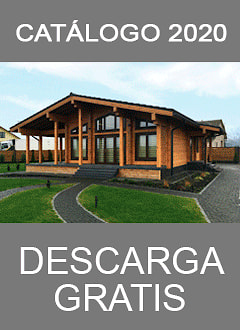≡ Catalogar
|
|
Pine physical properties The height of pine trees is usually 20 - 40 meters. Pine is a fast-growing species, and at the same time pine tree lives 300 - 500 years on the average. The annual growth of pines in height under favorable growing conditions can be between 0.8 - 1 m. Annual rings are clearly visible on all cuts. Nucleus is present. Resinous is there. The texture of pine is monotonous. Pine has small density due to great differences in structure of early and late wood. the density of early zone is in 2-3 times lower than late zone of one year layer. An average content of a late wood in one year layer is about 27% The height of pine trees is usually 20 - 40 meters. Pine is a fast-growing species, and at the same time pine tree lives 300 - 500 years on the average. The annual growth of pines in height under favorable growing conditions can be between 0.8 - 1 m. Annual rings are clearly visible on all cuts. Nucleus is present. Resinous is there. The texture of pine is monotonous. Pine has small density due to great differences in structure of early and late wood. the density of early zone is in 2-3 times lower than late zone of one year layer. An average content of a late wood in one year layer is about 27% An average humidity of a growing pine in the sapwood is - 112% in the core - 33%. On the top of a tree the sapwood moisture becomes higher, and the humidity in the core remains relatively constant. There is a daily and seasonal humidity fluctuations. Maximum humidity - 20-30% above the average - observed in the morning, by the end of the day it is reduced to a minimum - at 30-35% below the average in the evening and again begins to rise. An average humidity of a freshly cut wood is 85%: sapwood - 100-120%, the nucleus - is 30-40%, bark - 120%. Pine drying. For pine the shrinkage to a standard humidity - 12% in the tangential direction is on average 6.7% - for the early zone of annual layers, 7.5% - for later layers. However, with the increase of an ambient air, an water absorption is happening. Dehumidification and drying processes can be considered almost mutually inverse. For this reason, it is a rule to characterize size changes of a timber sample by swelling coefficient: the percentage of size changes to the percentage of wood humidity. An average value of swelling coefficient for Scots pine is as follows: - In the radial direction - 0.18; - Tangentially - 0.31; - Volume - 0.50. Vacuum infrared drying technology allows us to control the properties of pine wood, for example, cracks appeared during the drying technology will no longer grow in the future, in contrast to other types of drying. And logs or timber humidity is not subjected to content is not subject to moisture absorption in the same degree as using other drying types. In addition, pine wood less than deciduous breed disposed to casting during drying process. Density. Pine, like most conifers, belongs to a group of rocks of low density. The average value of density at standard humidity of 12% 505 kg / cu. m, wood density - 480 kg / cu. m Permeability of liquids and gases. Pine wood has a high moisture permeability values and breathability. When excess pressure of 0.1 MPa, on the one side of the sample, the value of air permeability in the radial direction is 56.2 cu. mm / cm ² / s for the sapwood and 2.6 kub.mm / cm / s - for the core. For comparison, the value of air permeability of oak trees at the same pressure is 0.13 cu. mm / cm / sec. The high values of moisture permeability allows to use successfully a variety of protective substances. According to the ability to get saturated by protective substances, pine sapwood is refered to easily saturated breeds, and the core - to a middle saturated, whereas spruce and larch are refered to hard saturated breeds. Thermal properties. The thermal conductivity increases with a density increase. Thermal wood expansion is very difficult to detect because it is masked by the phenomena of shrinkage and moisture absorption. As to insulating, timber has rates, that exceed substentially those rates, which aluminium (is used in windows production) has, and a little bit higher (comparable) that PVC has. Transparency. Sensitive instruments can detect the penetration of light radiation through thick pine wood samples up to 35 mm. X-ray radiation has almost no effect on the structure and mechanical properties of wood, so it is used for inspection of assortments. It is established now that wood could be used effectively for neutron radiation shielding. Pine covering of 100mm thick replaces polyethylene protection, providing greater heat resistance and durability. Mechanical pine features. Strength. Strength tensile: In static bending - 70 - 92 MPa; In compression parallel to grain - 40 - 49 MPa; In tension along the fibers - 100 - 116 MPa; When shearing along the tangential plane - 6,6-8,1 MPa. Modulus of elasticity in static bending - 8.0 - 13.1 GPa. Technical and operational features. Impact strength - 28 - 51 kJ / sq. Hardness: End - 28 - 33 N / mm; Radial - 21-25 N / mm; End - 16 - 23 N / mm. Pine is a soft breed - up to 40 N / mm. Due to the fact that pine is a soft wood, it is well handled by cutting tool. Pine is easily grinded - the height of asperities is 8-60 microns, whereas for ash and maple - up to 200 microns, because of features of their anatomical roughnesses. Pine wood belongs to the group resistant to biological influences, such as the defeat of mushrooms. We speak english, russian and german:+375298-06-05-67 — WhatsApp, Viber, TelegramMira más:Puedes ver una reseña en video de la casa de madera "Casa Blanca" de madera laminada encolada Archiline Houses: Puede ver una revisión en video de la casa de madera "Mirage": If you want to buy pine physical properties , you can:
More from section |
|
© 2025
ArchiLine Wooden Houses
114-49, Necrasov str., Minsk, Republic of Belarus, 220049
The site is powered by Nestorclub.com | |
 Good Wooden House since 2004
Good Wooden House since 2004














